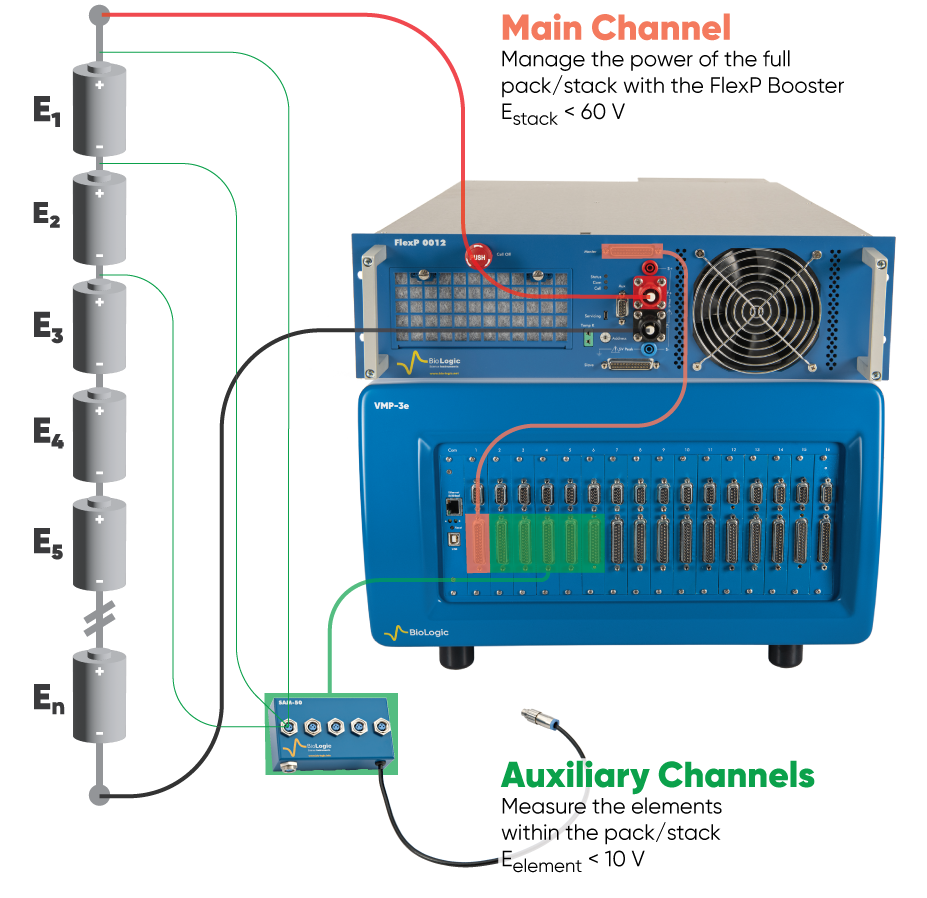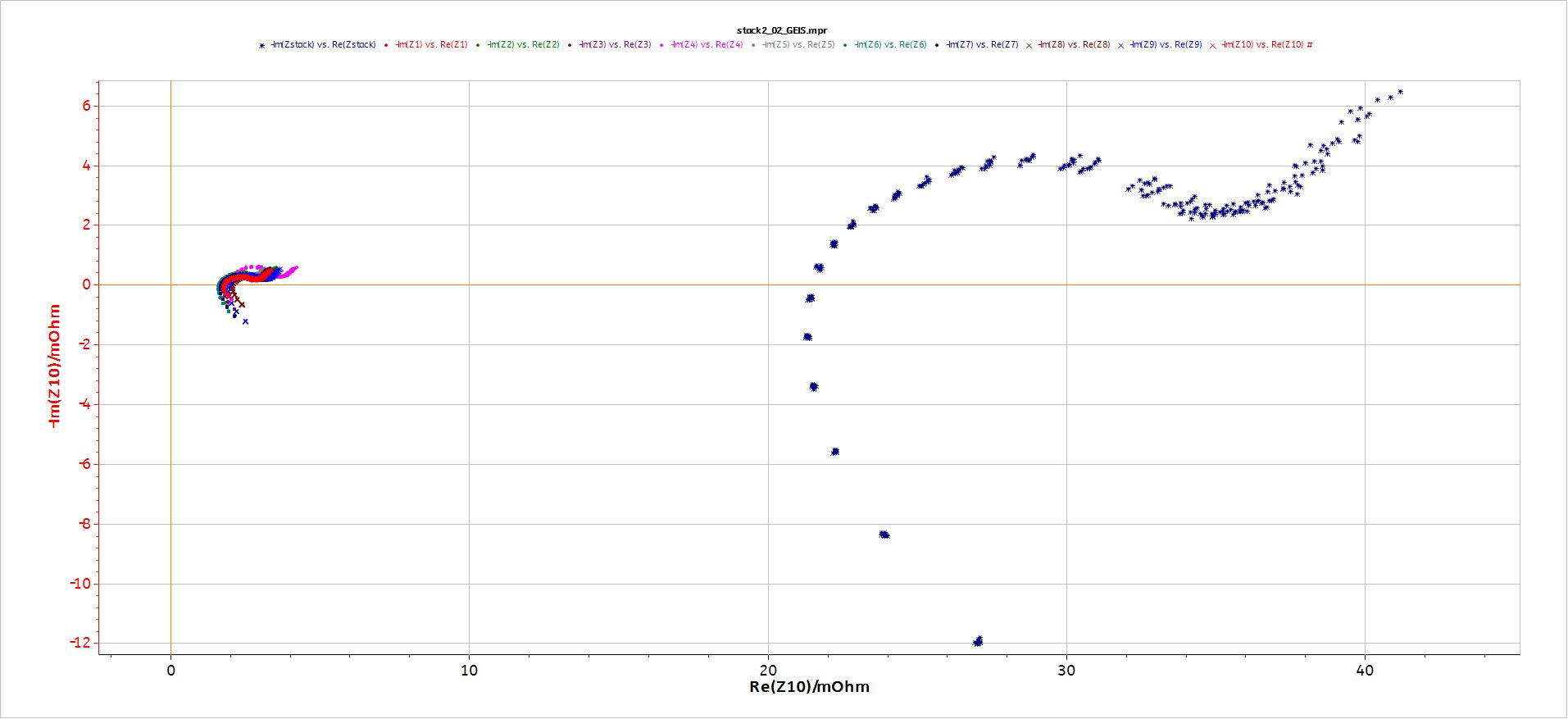Optimize Pack and Stack Performance with Simultaneous Measurements
Latest updated: November 19, 2024Introduction
Energy storage and conversion devices, like batteries and fuel cells, are becoming more and more important to reducing our independence on fossil and other non-renewable fuels. To ensure optimal performance and lifespan, battery packs and fuel cell stacks must be carefully monitored and managed. BioLogic’s innovative solution enables simultaneous measurements of the entire pack or stack and individual elements, providing valuable insights and reducing experiment time significantly.
BioLogic’s potentiostats and EC-Lab® software are powerful tools for understanding the dynamic behavior of individual elements within battery packs or fuel cell stacks and the pack or stack as a whole. This article explains how, with our instruments and software configurations, you can design and oversee experiments related to both battery packs and fuel cell stacks.
Configuration for Stack/Pack Applications:
While all BioLogic potentiostats have the native capability to measure two voltages with one channel simultaneously, the SAM-50 (Sense Adapter Module) simplifies connections and minimizes connection artifacts by directly linking to BioLogic’s VMP-3e potentiostat. This simplified connection is invaluable for both battery and fuel cell applications, where many connections are required. The SAM-50 needs five dedicated auxiliary channels and one main channel. With this configuration you can measure up to 20 V (with voltage offset adjustment), perfect for small fuel cell stacks. And if you need more power, the main channel can be connected to a FlexP Booster to measure up to 60 V, great for battery packs. Each channel connects to two cells. An example of this connection is shown in Figure 1, where one channel can measure two voltages (i.e., ΔVE1 = Ref1 – Ref2 and ΔVE2 = Ref2 – Ref3). This allows you to measure up to 10 cells with one SAM-50, and by connecting three SAM-50s to the VMP-3e, up to 30 cells can be measured simultaneously.
The main channel controls the current, measures the voltage, and applies AC stimulation, while auxiliary channels measure the cells’ potential, offering a synchronized and efficient setup. EC-Lab® software provides various techniques for stack/pack testing in both galvanostatic and potentiostatic modes, enhancing flexibility and ease of use. For ease of data postprocess and traceability, the data of the main and the auxiliary channels are all stored in the same file.

Figure 1. Connection scheme of a SAM-50 set-up with the VMP-3e and FlexP booster
Impedance Measurement in Fuel Cell and Battery Stacks:
Impedance measurements on batteries and fuel cells are crucial for understanding internal resistance and gas distribution. The VMP-3e and EC-Lab® software, coupled with SAM-50, is the only system on the market that allows simultaneous impedance measurements on each cell and the total impedance of the stack/pack. This ensures accuracy and reduces experimental drift over time. To run EIS measurements, only the main channel needs to have EIS capability, and the auxiliary channels measure the response. This capability is demonstrated through impedance measurements on four alkaline batteries connected in series, shown in Figure 2 and Figure 3, showcasing the versatility of the setup.

Figure 2: EIS data of a 4-cell battery stack (higher impedance) and its individual cells (lower impedance).

Figure 3: Zoom on the EIS data for individual elements of a 4-cell batterie stack.
Conclusions
BioLogic’s VMP-3e potentiostat and EC-Lab® software, combined with SAM-50, offers users an easy and comprehensive solution for studying and optimizing battery and fuel cell applications. The simultaneous measurement capabilities and detailed data analysis contribute to better understanding and management of energy storage systems, ultimately improving their performance and lifespan.
References
Application Note 59 – A comprehensive solution to address battery module/pack








